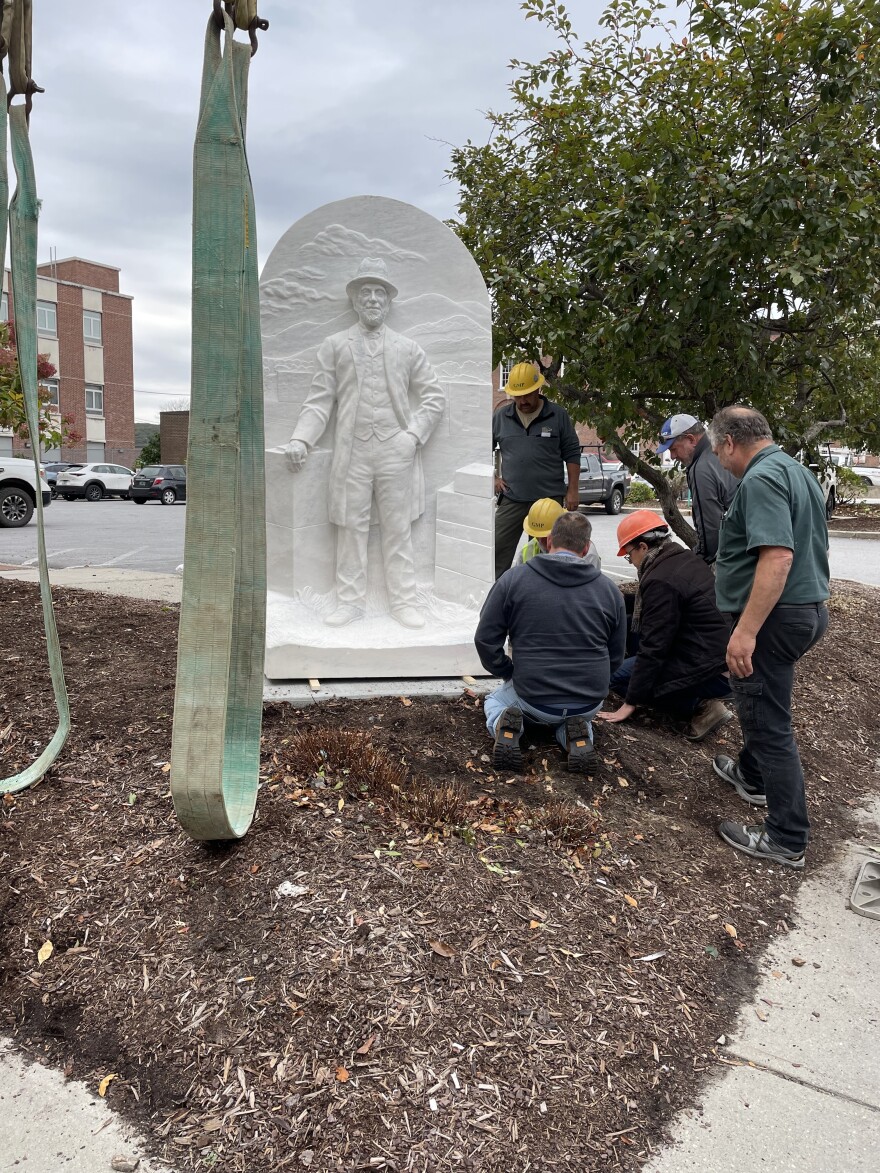Officials with Rutland’s sculpture trail are unveiling their newest addition this week. The sculpture commemorates a man who was a civic and national leader — as well as a controversial divider.
Redfield Proctor was born in 1831 and served in the Union Army. He founded the Vermont Marble Company in 1880 and grew it into one of the world's largest marble producers. The company’s stone was used to build the Lincoln Memorial, U.S. Supreme Court and many other notable sites.
Proctor also had a law degree and was equally successful in politics. He served as Vermont’s governor, U.S. senator and as secretary of war under President Benjamin Harrison.
But Proctor’s push in 1886 to divide Rutland — the largest city in Vermont at the time — into smaller towns, including West Rutland and his namesake Proctor, was condemned by many as a political move that’s had lasting impact.

Still, Mark Foley, one of the sculpture trail organizers, says Proctor’s imprint on the region was too big to ignore.
“Knowing that the stone, particularly, played such a key role in the early success and development of Rutland and the county, he was obviously a natural fit," Foley said. "And to not have him be a part of that would seem to be a big hole.”
Proctor’s full-body white marble statue now stands in downtown Rutland on Merchants’ Row.
Previous coverage: Novel Looks At The Division Of Rutland
Have questions, comments or tips? Send us a message or reach out to reporter Nina Keck:





